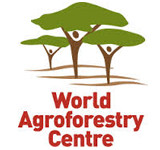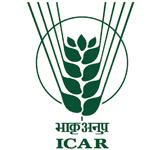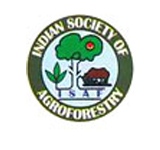
Vigyan Bhavan & Kempinski Ambience
10 - 14 February 2014
Delhi, India
blog
In discussions at the World Congress on Agroforestry about agroforestry and nature you could begin to believe that the ecosystem services provided by forests and agroforests are the same. They aren’t. Trees outside forests will never be able to replicate the ecosystem service functions provided by forests.
Forests and agroforests are very different.
Before we get started on these differences, there is one exception. Multi-strata agroforestry systems which occur across the humid tropics in countries such as Indonesia and Cameroon do emulate natural forests. However, these agroforestry systems are not profitable to the farmers who manage them, so they are rapidly disappearing. In Indonesia for example, multistrata rubber agroforests are being replaced by plantation rubber, which is three times more profitable.
Leaving aside the fact that there are differing definitions for primary, secondary, old growth, plantation and degraded forests, a forest is a complex ecosystem that forms a habitat and supports a whole range of species, including in some cases humans.
The ecosystem services provided by forests are global public goods. If you cut down forests, you lose that habitat, that ecosystem and the services it provides forever. Losing the Sumatran orangutan or tiger is a loss to the world over.
An agroforest is essentially part of an agricultural landscape. The World Agroforestry Centre (ICRAF) defines agroforestry as ‘the inclusion of trees in farming systems and their management in rural landscapes to enhance productivity, profitability, diversity and ecosystem sustainability’. An agroforest is not an ecosystem or plant community that supports wildlife, it is a farming system.
While agroforestry can bring trees back into the landscape, it will never replicate a forest. So what then is the role of agroforestry in ecosystem services?
At the farm level, trees create a distinct microclimate that supports the growth of crops. They have the potential to improve soil fertility and soil stability, increase plant species richness and structural complexity and they provide habitats for animals.
At the landscape scale, trees have an important role in creating ‘corridors’ between forest patches that allow for animal movement and cross-breeding which keeps the tree populations healthy. They also do store large amounts of carbon and thus can offset greenhouse gas emissions from agricultural fields. Agroforests enhance agrobiodiversity and with this comes greater pest resistance. They also have an aesthetic value; people like to look at trees.
So, how can we bring more trees into the landscape through agroforestry to provide these important ecosystem services?
A farmer is not going to plant a tree because it will store carbon to mitigate climate change. The tree has to provide the farmer with income or some other tangible benefit, without compromising on their primary crop or livestock production.
The farmer as a producer of the food we eat is only one part of the picture. Perhaps some of the discussions occurring between scientists, leading agri-business players and policy makers during this Congress will translate to increased corporate responsibility initiatives and greater political will to make trees in agricultural landscapes a viable and reliable option for farmers.
And when those farmers do engage in agroforestry, don’t be mistaken, it will be as an agricultural activity driven by profit. They might not be creating a forest, but they will be creating healthier landscapes.
—
By Anja Gassner and Kate Langford.
Dr. Gassner leads the Research Methods Group at the World Agroforestry Centre
Ms Langford is a science writer
—
Follow the Congress on Twitter #WCA2014 for live updates!







One Person has left comments on this post
“….multistrata rubber agroforests are being replaced by plantation rubber, which is three times more profitable”
if this were true, the blog
“http://www.wca2014.org/show-me-the-proof-then-ill-adopt-the-rubber-conundrum-in-indonesia/” would probably not have been written…
Profitability of land use systems, such as jungle rubber versus plantation rubber, can be measured in multiple ways: per unit area without looking at costs (and then the factor three may apply), per unit area expressed as net present value with all costs and benefit flows included over a production cycle (and then the conclusion depends on the discount rate used), or as “returns to labour”. For smallholders the latter may be the most relevant and economic analyses have shown a modest increase when shifting to simplified rubber agroforestry with clonal rubber, balanced in the farmer eyes by risks.
For a deeper discussion of the tradeoffs involved please see: van Noordwijk M, Tata H L, Xu J, Dewi S and Minang P, 2012. Segregate or integrate for multifunctionality and sustained change through landscape agroforestry involving rubber in Indonesia and China.. In: Agroforestry: The Future of Global Landuse. Nair PKR and Garrity DP (eds.), Springer, The Netherlands. pp 69-104